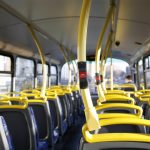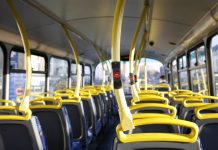London spans for over 1500 square kilometres and 32 boroughs. With such a large area to accommodate for, the city of London has truly upped its game when it comes to public transport. With so many options for travel, paired with the diverse terrain of its destinations, different situations will call for different transport types.
If you’re staying at the Montcalm Hotel Barbican and at a loss when it comes to the broad choice of travel at your doorstep, then we’ve created a guide to help you find the best way to get around the city. Whether it’s budgetary concerns or time constraints, when staying in London, there’s a mode of transport for all occasions.
Buses
London TfL’s bus service was introduced in 1999 and is one of the easiest and cheapest ways to get around the city. With hundreds of bus routes operating throughout the city, it’s no surprise to find that there are over 6 million users a day.
There are 673 London bus routes in Greater London alongside 52 night bus routes, which run 24 hours throughout the city.
London buses also run a hopper fare, meaning that two buses taken within an hour will cost the same as one single bus journey, making the taking of connections through the city far cheaper to navigate.
London Underground
With 270 stations and 12 lines, the London Underground has its roots in being the world’s first underground passenger railway and opened over 150 years ago in 1863. The historic Metropolitan Railway was the seed for what now spans 250 miles of train line under the city.
The London Underground works via oyster cards, a type of contactless card you top up with cash. The price of a single journey varies depending on the time of day you are travelling. Between 7.30am and 9.30am and between 4.30pm and 7pm is peak travel time, making the tube more expensive and far busier. If you’re visiting luxury London hotel suites and plan to do some sightseeing throughout the day, your best avoiding the tube between these times, saving money and making for a far more comfortable journey.
You can also buy day and week-long travel cards, a great value way to keep on the move in the city for less money. Bought with a choice of zones you want to travel through, the travel card is a handy way to enjoy the city on a budget.
Docklands Light Railway
The DLR line is a tramline and offshoot from the London Underground service. Serving much of the Docklands area of East London, the Docklands Light Railway glides through Canary Wharf, Isle of Dogs and Canning Town, all with amazing views over the Thames and its expansive network of canals. For first timers in the city staying at the Barbican Hotel London, the Docklands Light Railway is worth it for the incredible views, even if it’s not your final destination.
River Bus Services
Another idyllic way to enjoy the city from a new perspective is through the River Bus services running along the Thames. The River Bus is payable by Oyster Card and contactless payment card, and runs from 22 piers, along 6 different routes. The Thames Clipper is a nippy, spacious cruiser, and gives you the comfort and space to fully soak in the iconic London attractions along the legendary river.
London Trams
Trams are one of the simplest methods of transport for locals in South and South West London. These services offer cheap roadside transport all the way through Wimbledon, Croydon, Beckenham and New Addington. London Tram services also offer step-free access, making it the perfect mode of transport for customers who are less physically able. Furthermore, the tram services offer quick and spacious journeys through the suburbs of the city, making life for commuters far easier than it would be to take the London Underground.
Accessible Public transport
And that brings us neatly on to the accessibility of public transport. Many of London’s public transport systems cater to those with accessibility requirements. From Underground fit services to motorised step-free access for wheelchairs on buses, the public transport system is on the whole, fully equipped to cater for a variety of accessibility needs. If a lift system doesn’t work, most underground stations will have warnings about their current lack of facilities.
Santander Cycles
The revolutionary Santander Cycle scheme is part of the City of London’s push to make their public transport more eco-friendly. These nifty cycling docks are stationed all across the city and cater to the ever growing cycling superhighway in London. For those who love to cycle, the scheme offers a cheap rental, often no more than £1, providing you with everything you’ll need to explore the city.
Taxi
From phone app ordered Ubers, to the famous London Hackney Cab, the city has a wide range of taxi services to choose from. Whether you’re late for a meeting or a reservation at a Barbican restaurant in London, taxis are one of the easiest ways to get around the city in next to no time at all.
With the many options afforded to Uber customers, you can find cheap transport and share the financial load with the Uber Pool choice. Taxi services, in general, may cost more than public transport, but the cost of simplicity and ease are well worth it.
Airlines
As a large capital city, London plays host to 5 different international airports. Varying in size from the single runway to 5 terminals, each airport comes with its own unique selling point, offering ease of access into many different city districts.
Before travelling into the UK, make sure that you have picked the right airport for the area you’re planning to frequent. With half hour train journeys from Heathrow to Paddington, Gatwick to Victoria and Stansted to Tottenham, there are a multitude of choices to make your trip that little bit easier.
Each airport also serves a range of different countries. With Heathrow and Gatwick being the main multi-continent hubs, the smaller airports of London are best for European flights.










